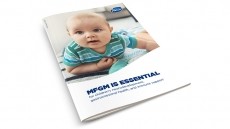Foodwatch: Lactalis scandal is one too many

The Salmonella Agona outbreak affected 40 children under one year of age: 37 in France, two in Spain and one in Greece.
The NGO and parents from l’Association des Familles Victimes du Lait Contaminé aux Salmonelles (AFVLCS) lodged a complaint in a Paris court this week.
Teissonniere Topaloff Lafforgue Andreu & associés (TTLA) filed the case on behalf of the parties.
Charges brought range from marketing a product dangerous to health, failure to warn and withdraw products, endangering others, committing an involuntary act on the physical integrity of a person, and exporting a food product harmful to health to another European Union country.
Scandal should have been avoided - NGO
Foodwatch said those responsible have been ‘passing the buck’ since December and the scandal ‘could and should’ have been avoided. It has listed 12 breaches of the law.
Karine Jacquemart, director of foodwatch, said those involved must face justice to ensure such a scandal never happens again.
"Both the European and French legislation impose numerous obligations on all of the players in the food chain. The producer, the distributors, the laboratories and, of course, the public authorities cannot ignore them.”
Foodwatch said primary responsibility rests with Lactalis but major supermarket chains are at fault for continuing to sell products despite recalls.
Carrefour, E.Leclerc, Auchan, Cora, Casino and Système U were among retailers that said items that should have been withdrawn from shelves had been sold.
Foodwatch said Eurofins performed internal checks for Lactalis and the NGO also criticised public authorities for their handling of the crisis.
Eurofins said its policy is not to comment on topics or issues related to companies.
Action by the direction générale de la concurrence, de la consommation et de la répression des fraudes (DGCCRF) found items subject to the recall that were still on sale.
Of 3,600 controls in 15 days it found 22 sites that had not respected the recall procedure including some large and medium-sized stores, pharmacies and retailers.
Scale of recall
Lactalis said contaminated products were manufactured at Craon in tower number 1. It has stopped activity of the tower.
The firm added it will look at sensitivity of analyzes by its external laboratory after nearly 16,000 tests did not identify S. Agona presence.
It recalled more than 7,000 tonnes of products manufactured at the site from 15 February last year.
Lactalis will present a plan to authorities to restart the second tower and packaging lines.
Ingrid Kragl, director of information of foodwatch, said those involved ‘did not take their obligations seriously’.
“This is at the heart of the problem - the penalties should be deterrent and exemplary.”
Twenty seven babies were infected since 2006 with the same strain of S. Agona that sickened the children last year, according to Le Centre national de référence (CNR) des Salmonella (Institut Pasteur).
Cases occurred between 2006-2016 with no grouping over time or in a specific region.
The institute found the profile of 2017 cases is the same as that of strains isolated during the 2004-2005 outbreak linked to infant milk produced in the same plant.










